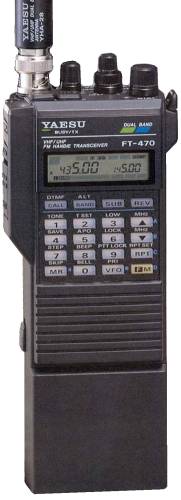Editorial: Designing a Perfect Portable Radio (HT)
Let me start with the history of the handheld radios that I have owned, and then I’ll get into my ideas of combining existing and new features into “my” perfect HT. WARNING: This is a long article. Scroll down to Part 2 if you want to get past my history bit.
PART 1 – MY HT HISTORY

Yaesu FT-470 HT Image from hampedia.net
So I recently purchased a Yaesu VX-8DR HT package for just about $700 (this includes programming software and cable, spare high-capacity battery, quick charge cradle, speaker mic and GPS unit to enable the built in APRS). My last four HTs have been from Yaesu (FT-470 dual bander bought in the early 90s, VX-5R tri bander bought in 2000, VX-7R quad bander bought in 2006, and the new VX-8DR), and I still have all of them lying around somewhere. To me, Yaesu is where it’s at with HTs. That FT-470 was expensive when I bought it (I was in high school and anything over $100 was expensive. I’m thinking the ‘470 was close to $400, it may have been less. If Baofeng or Wouxon was an option then, I’d have probably taken it.) The ‘470 was also big. Especially when you had the good battery and the 12V charging adapter on it (picture on right is with the small battery. The big battery was about 1½ times the size of the small battery. The 12V/charging adapter fit between the radio and the battery). It was also heavy, and would make a formidable substitute for a blackjack if you held it by the rubber duck antenna. It could monitor VHF and UHF at the same time. Read more



